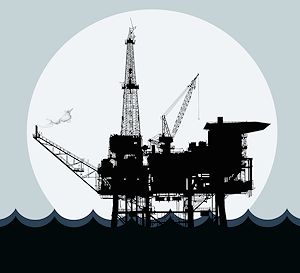The Department of the Interior has released its final rule on control of offshore oil and gas wells,  aimed at preventing incidents such as the 2010 Deep Horizon blowout and mitigating any spills that do occur. The final rule amends regulations issued in April of last year.
aimed at preventing incidents such as the 2010 Deep Horizon blowout and mitigating any spills that do occur. The final rule amends regulations issued in April of last year.
The rule includes new design standards for blowout preventers, along with new regulations for monitoring of wells and well containment, well casing, cementing, and many other operational practices.
“We listened extensively to industry and other stakeholders and heard their concerns loud and clear – about drilling margins, blowout preventer inspections, accumulator capacity, and real-time monitoring,” said Janice Schneider, Assistant Secretary for Land and Minerals Management.
The rulemaking process began with a 2012 forum held by the Bureau of Safety and Environmental Enforcement (BSEE) with members of the industry, researchers and federal officials. This was followed by more than 50 meetings with industry groups and trade associations, operators, equipment makes, regulators and environmental groups.
“We have made it a priority to engage with industry to strengthen our understanding of emerging technology, to participate with standards development organizations and to seek out the perspectives of other stakeholders,” said BSEE Director Brian Salerno.
Interior said the rule is “in harmony” with best practices in the industry. It said that new drilling rigs already incorporate the updated industry standards BSEE cited, and comply with current engineering practices and training standards.
The rule was met with concern from industry representatives. The American Petroleum Institute said it “may have unintended negative consequences for safety and affect future offshore energy projects.”
Companies have three months to comply with the new rule, but may request additional time.
